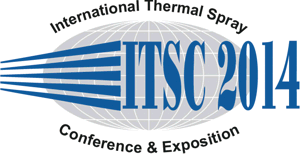
|
4160 |
|
Effect of TiO2-bond coats on the adhesion of hydroxyapatitde coatings by HVOF |
|
Juan Muñoz Saldaña* / Centro de Investigación y de Estudios Avanzados del Instituto Politécnico Nacional, Mexico A. L. Giraldo-Betancur / Centro de Investigación y de Estudios Avanzados del IPN, México J. A. Hermann-Muñoz/ Centro de Investigación y de Estudios Avanzados del IPN, México D. G. Espinosa-Arbeláez/ Centro de Investigación y de Estudios Avanzados del IPN, México G. Trapaga-Martinez/ Centro de Investigación y de Estudios Avanzados del IPN, México |
|
Hydroxyapatite (HAp) coating deposition has been reported by different methods, mainly using thermal spray techniques.The parameters for coating deposition directly affect the properties of HAp such as environmental stability, adhesion strength, crystallinity, biocompatibility, etc. The most important characteristics to take into account in the HAp coating after deposition are thickness, phase purity, porosity, roughness,residual stresses, among others. These characteristics are used as feedback in a design of experiments to optimize the coating quality. Adhesion of the coating is one of the most important properties, because it affects the performance of an implant in vivo.In this work, the study of the influence of a TiO2layer used as a bond coat on the adhesion of both bio (home prepared) and commercial HAp coating deposited using HVOF (High Velocity Oxy Fuel) is shown. The HVOF deposition was carried out varying Fuel/Oxygen (F/O) ratio (with a combination of propane/oxygen), Powder Feed Rate (PFR) and Stand off Distance (SOD) to obtain TiO2 and HAp coatings.The selected combination of operating conditionsallowedto obtain HAp coatings with a low content of the amorphous phases, which is one of the typical problems associated with other thermal spray techniques such as Atmospheric Plasma Spray.The adhesionstrength was measured using the standard method ASTM C1624-05, where a diamond indenter with a cono-spherical geometry, is used to scratch across the surface with defined normal force and distance.Results show variations in the adhesion of the HAp/TiO2 bioactive coating on 304 stainless steel substrateswith TiO2thickness. |